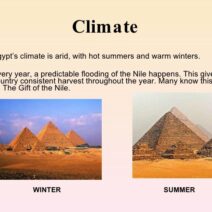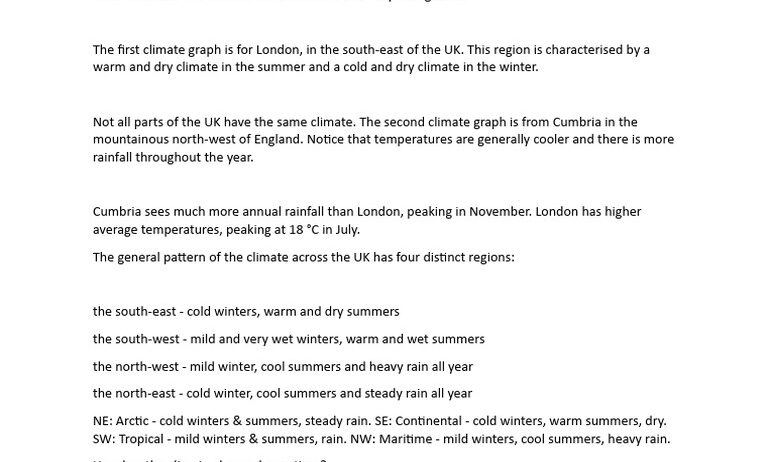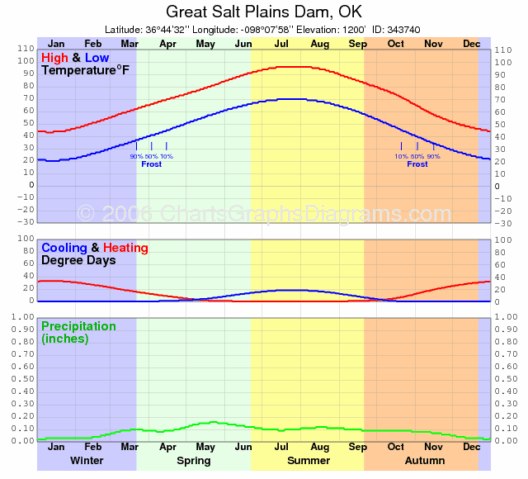The United Kingdom is renowned for its distinctive climate, characterized by a confluence of rain, fog, and relatively mild summers. This unique meteorological tapestry not only influences daily life but also shapes the very identity of the British landscape and its inhabitants. The interplay between the geographic locations, oceanic currents, and weather patterns render the UK’s climate a point of intrigue for both residents and visitors alike.
The UK is predominantly maritime in nature, a result of its position as an island nation surrounded by the vast Atlantic Ocean and the North Sea. This proximity to large bodies of water profoundly affects the temperature and precipitation patterns experienced across the country. In essence, the British climate is often described as temperate maritime, which translates to mild conditions throughout the year, with rainfall being a ubiquitous feature.
One of the most observed phenomena in the UK climate is its propensity for rain. The distribution of rainfall is remarkably uneven, with the west coast, particularly Wales and the Lake District, receiving significantly more precipitation than the eastern parts of England. This rainfall is not merely a climatic quirk but is intricately linked to the region’s topography. The presence of the Pennines and various upland areas creates a barrier that forces moist air from the Atlantic to rise, cool, and condense, resulting in the copious rain that fosters the lush greenery synonymous with Britain.
Another hallmark of the UK climate is fog. This meteorological occurrence is particularly prominent in coastal areas and during the transitional seasons of autumn and spring. The phenomenon of fog is a direct outcome of warm, moist air from the Atlantic interacting with cooler coastal land or water. The resulting temperature differential creates dense fog, reducing visibility and bestowing a mysterious aura to the landscape. This fog embodies the quintessential English scenery, often serving as a background for literary and artistic representations that celebrate its ethereal qualities.
While rain and fog may define the UK’s climate, the summers are distinctly mild rather than sweltering. The summer months from June to August typically boast temperatures that range from 15°C to 25°C (59°F to 77°F). Such temperate conditions are incredibly conducive to outdoor activities and festivals that are integral to British culture. The mild summers are particularly attractive because they provide a respite from the more extreme weather patterns experienced in other parts of Europe, making the UK a desirable destination for tourists seeking to avoid the sweltering heat often seen elsewhere.
The intricate dance of weather patterns in the UK can be attributed to several factors. Chief among these is the influence of the North Atlantic Drift, a warm ocean current that moderates temperatures across the British Isles. This is contrasted by the potential incursions of cold Arctic air that can occasionally sweep down, leading to sudden temperature drops. Such variability is emblematic of the UK’s climate, fostering a constant state of uncertainty. Consequently, forecasting the weather remains a national obsession, with the British often engaging in daily discussions surrounding meteorological predictions.
Another element contributing to this fascination with the UK’s climate is its historical context. The frequent rains and overcast skies have shaped not only the landscape but also the culture and psychology of its inhabitants. The perpetually damp environment has fostered a certain resilience and adaptability in the British way of life. From the evolution of distinct architectural features designed to cope with the relentless moisture to the development of clothing that shields against the elements, the climate has undeniably influenced societal norms and practices.
The agricultural practices in the UK are similarly dictated by climatic conditions. The mild summers and sufficient rainfall support a diverse array of crops, including barley, oats, and wheat, while also allowing the lush pastures ideal for grazing livestock. However, the unpredictability of the weather also poses challenges. Farmers must contend with the possibility of sudden droughts or excess rain, requiring astute adaptability to weather patterns that have historically been capricious.
As climate change increasingly impacts global weather systems, the UK is not exempt from its effects. Altered precipitation patterns, rising temperatures, and increased storm frequency pose significant threats to the established climate norms. The changing climate may lead to prolonged dry spells, rendering the traditional agricultural calendar obsolete and exacerbating water scarcity in certain regions. Hence, there is a growing imperative to engage with and combat climate change at both individual and societal levels.
In conclusion, the climate of the United Kingdom—characterized by its rains, fogs, and mild summers—invites admiration and introspection. While often regarded as a quaint quirk of the British identity, these climatic features play a fundamental role in shaping lifestyles, agriculture, and culture. Appreciating the idiosyncrasies of the UK climate enhances one’s understanding of the broader environmental challenges facing the world today. It begins a dialogue about sustainability, adaptation, and the interconnected nature of weather and human activity. As we navigate through the complexities of climate change, recognizing the UK’s climatic nuances becomes crucial in fostering a resilient and adaptive society.







